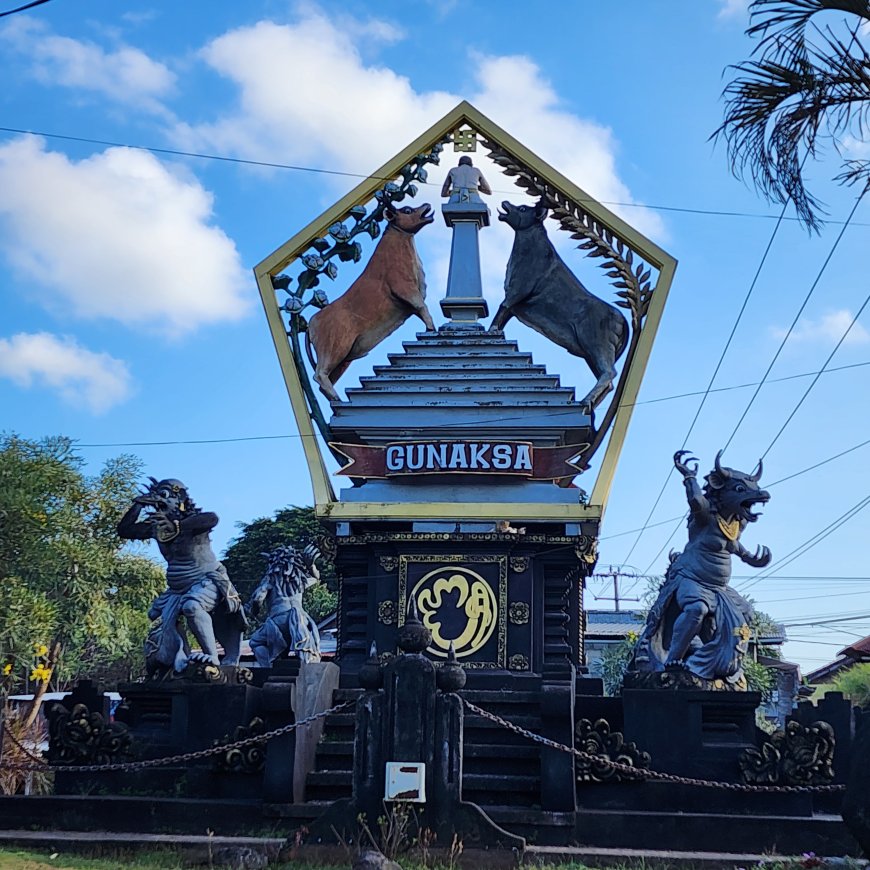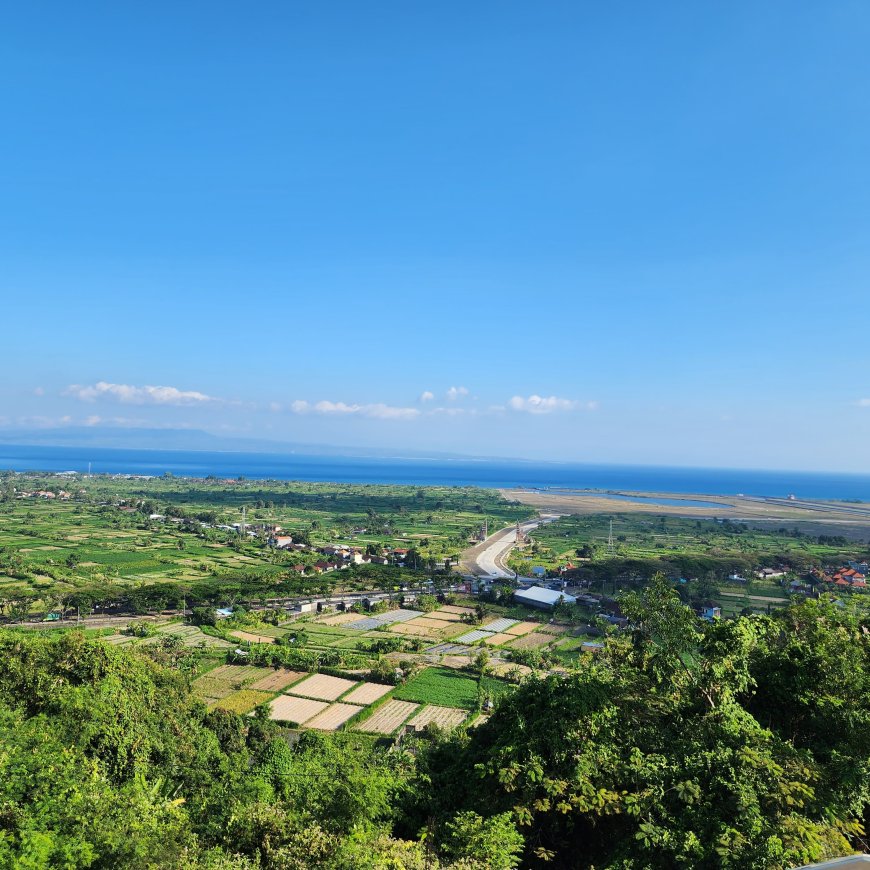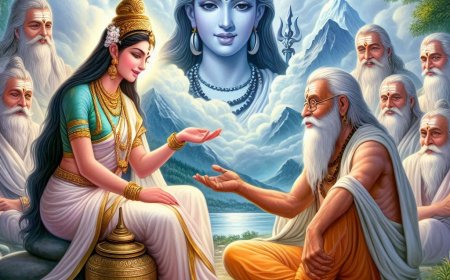Unveiling the Unique of Gunaksa Village's History: Formed by the Mysterious Black Magic Warding Temple
The village of Gunaksa in Bali is a place rich in culture and history. Located on the eastern side of the island of Bali, this village boasts stunning natural beauty but also has a strong tradition of black magic. Black magic here encompasses spiritual practices used to protect and provide well-being to the community, including the use of the Pewalang Tamah Temple. Gunaksa Village has historical roots in the migration of people from the Tutuan Kingdom on the island of Java. Allegedly, black magic is still inherited and remains an important part of this village's unique culture, demonstrating the resilience of local traditions in the midst of modernity.

Gunaksa Village, situated in the Dawan District of Klungkung Regency, Bali, is a place steeped in deep cultural and historical mysteries. Despite its lesser-known status among Bali's more popular tourist destinations, the village has a rich and unique cultural heritage that has shaped it into what we see today. Before we delve into the role of black magic in the formation of Gunaksa Village, let's first understand the geographic location of this village. Located in the eastern part of Bali, Gunaksa Village captivates with its breathtaking natural charm, surrounded by towering green hills and close proximity to the beautiful coastline.
Beneath its natural beauty and serene beaches, there are hidden depths of mystery. Black magic is a central element in the beliefs and culture of Gunaksa Village. While the term "black magic" may sound mysterious, it actually refers to deep spiritual knowledge and practices that are believed to have been passed down from one generation to the next in Gunaksa Village. This article will take us on a journey to a deeper understanding of black magic and how it influences the formation and daily life of Gunaksa Village's residents.
Black magic in Gunaksa Village purportedly encompasses a variety of practices, beliefs, and rituals primarily used to protect, heal, and bring well-being to their community. These practices often involve local shamans or spiritual leaders who possess specialized knowledge in the use of incantations, prayers, and herbal concoctions to influence specific situations or conditions.
One essential element in the history of black magic in Gunaksa Village is the Pewalang Tamah Temple or Guna Ksaya, which serves as its origin. This temple is not merely a place of worship. It is believed to possess the power to protect the village from negative energies or supernatural threats. The local community believes that the presence of this temple has provided protection and progress to their settlement.
Black magic practices, in some cases, involve the use of symbols or statues believed to possess specific magical powers. In the context of Gunaksa Village, as passed down through generations, some of these symbols are used for specific purposes such as warding off evil spirits, healing illnesses, or achieving deep spiritual goals. However, it is said that in the past, Gunaksa Village also harbored a dark tragedy involving a sudden outbreak of deaths among its residents due to black magic practices. As a response to this disaster, the local community united to establish the Pewalang Tamah Temple, a sacred place intended to ward off diseases and free the village from the shadow of threatening black magic. This marks the beginning of Gunaksa Village and how the black magic epidemic influenced its formation.
The history of Gunaksa Village has deep and strong roots tied to significant events recorded in Babads (historical texts), ancient inscriptions, and local folklore of Gunaksa Village. According to the Tutuan Bukit Buluh inscription, the founders of Gunaksa Village originated from the Tutuan Kingdom, which was originally part of the Keling Kingdom on the island of Java. Their migration to Bali marked the beginning of the settlement in a previously green-hilled plain. Over time, these ancestors found a suitable location to establish their settlement, initially known as Banjar Belimbing and now more commonly referred to as Banjar Patus or Dauh Bingin.

View of Gunaksa Village (Photo Source: Editorial Collection)
One prominent event in the history of Gunaksa Village was the falling of the banyan tree in 1952. This majestic tree fell during the construction of the Gunaksa Public School and bore witness to the violent eruption of Mount Agung in 1963. Although the tree fell, the ancestors who built the settlement remained faithful to Hindu teachings, which mandated the presence of certain elements in a settlement, including:
- Pelinggih as a sign of devotion to the Supreme God (Ida Sang Hyang Widhi Wasa).
- Boundary markers known as "Palemahan."
- Inhabitants considered as Pawongan (sacred residents).
In order to meet these criteria, they established a place of worship known as Pura Pewalang Tamah or Guna Ksaya. "Guna" means all types of black magic, and "Ksaya" means to dispel. The local community believed that the progress of their settlement was influenced by the presence of Pura Pewalang Tamah. Pura Pewalang Tamah or Guna Ksaya served as the protector of the Banjar Belimbing community, aimed at dispelling all disturbances related to black magic. Over time, the region eventually developed into the village of Gunaksa.
Reportedly, even today, the knowledge of black magic is still passed down from generation to generation in Gunaksa Village, although its truth is not known for certain because such phenomena are not visibly apparent in the community's daily life. Despite facing challenges from nature and the modern era, black magic does not seem to play a tangible role in the village's life. However, this story reflects their perseverance and belief in preserving their ancestral heritage.
Currently, this traditional tale is still preserved and passed down from one generation to the next in Gunaksa Village. It remains one of the elements that enrich Bali's unique cultural diversity. In facing various challenges from nature and daily life, this traditional knowledge continues to play an important role in the village community's life, reflecting their perseverance and belief in preserving their ancestral heritage. Gunaksa Village is a real example of how local traditions and beliefs can endure and thrive in the midst of modernity, forming a community with a unique culture deeply rooted in its mysterious history.





























































